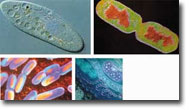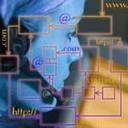
Quasars are the brightest things in the universe.
For the first time, astronomers have looked inside quasars -- the brightest objects in the universe -- and have seen evidence of black holes.
The study lends further confirmation to what scientists have long suspected -- that quasars are made up of super-massive black holes and the super-heated disks of material that are spiraling into them.
The results of the Ohio State University-led project were reported Thursday at the meeting of the American Astronomical Society (AAS) High Energy Astrophysics Division in San Francisco.
"There are many models that try to describe what's happening inside a quasar, and before, none of them could be ruled out. Now some of them can," said Xinyu Dai, a postdoctoral researcher at Ohio State. "We can begin to make more precise models of quasars, and gain a more complete view of black holes."



















